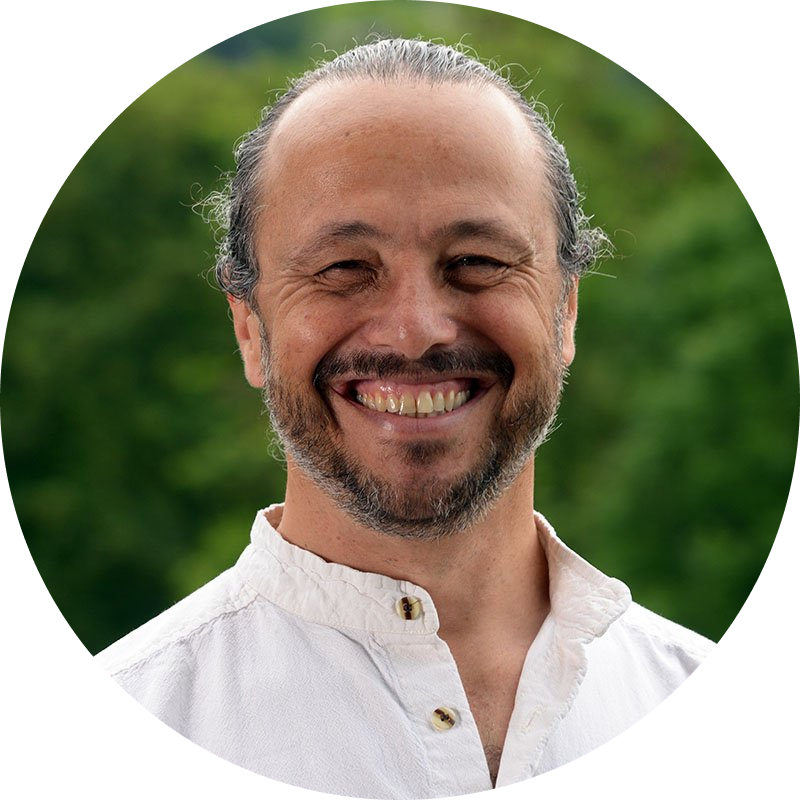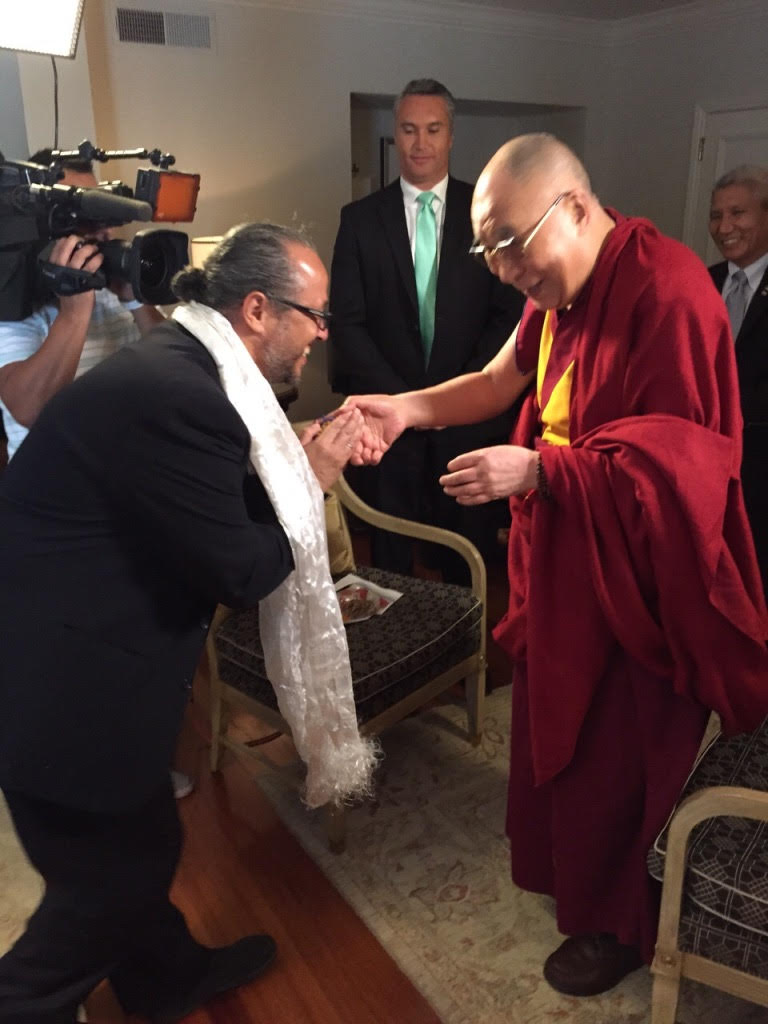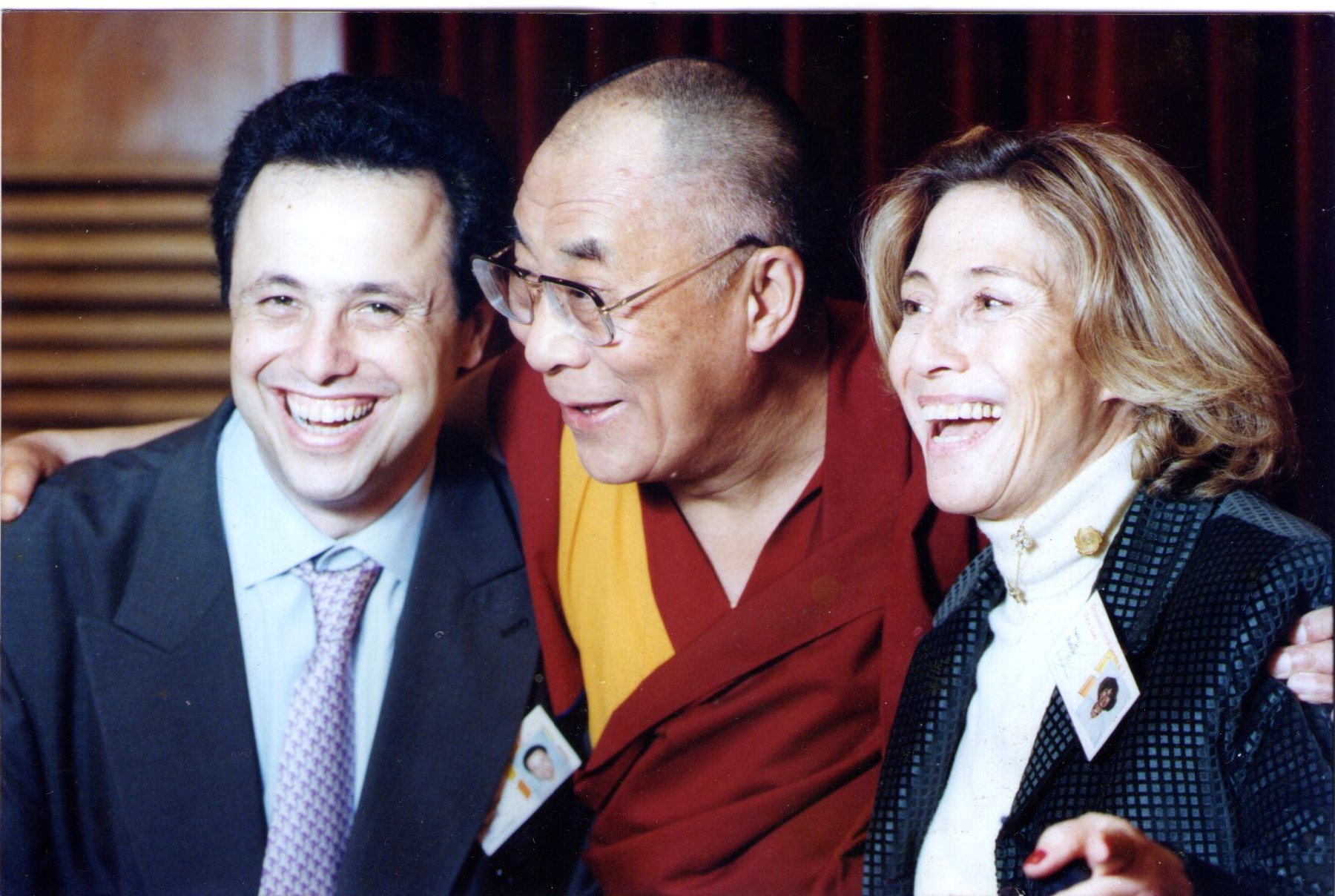About this Course
Building on the practices taught in Dr. Alejandro Chaoul’s first Wisdom Academy course, this course provides valuable insight into the trulkhor (magical movement) practices emphasized in the blessed Zhang Zhung Nyen Gyu tradition. Experienced teacher Alejandro Chaoul provides practical guidance on a range of powerful yogas, meticulously demonstrating each individual movement. You’ll learn how to clear obstacles of body, breath, and mind and use these three purified doors of action to encounter your Buddha nature.
Lessons
Lesson 1: Replete with Blessings: The Lineage of Magical Movement
Dr. Ale Chaoul begins the course by introducing the Zhang Zhung Nyen Gyu tradition of trulkhor (magical movement). He discusses the extraordinary origins and preservation of the lineage of practice as well as his own personal connection with that lineage. You’ll learn and practice a four-part breathing of the internal tsalung movement that will enhance your pervasive breath and magical movement practices.
Dr. Ale Chaoul begins the course by introducing the Zhang Zhung Nyen Gyu tradition of trulkhor (magical movement). He discusses the extraordinary origins and preservation of the lineage of practice as well as his own personal connection with that lineage. You’ll learn and practice a four-part breathing of the internal tsalung movement that will enhance your pervasive breath and magical movement practices.
Lesson 2: Embodying Altruism: Empowering Bodhicitta with Pervasive Breath
Ale shares his personal perspective on how these powerful trulkhor practices amplify your connections with the bodhicitta motivation, the lineage of practitioners, and your natural state of primordial purity. You’ll gain greater familiarity with the pervasive breath through an external tsalung practice from the Mother Tantra (Ma Gyu) as well as the ngondro (foundational) trulkhor of the A-Tri tradition. In addition, you’ll be introduced to the important gentle-breath retention practice (jam lung).
Ale shares his personal perspective on how these powerful trulkhor practices amplify your connections with the bodhicitta motivation, the lineage of practitioners, and your natural state of primordial purity. You’ll gain greater familiarity with the pervasive breath through an external tsalung practice from the Mother Tantra (Ma Gyu) as well as the ngondro (foundational) trulkhor of the A-Tri tradition. In addition, you’ll be introduced to the important gentle-breath retention practice (jam lung).
Lesson 3: Practicing the Essence: The Zhang Zhung Nyen Gyu Ngondro Movements
Ale elucidates how the ngondro practices are presented in Shardza Rinpoche Tashi Gyaltsen’s essential commentary on the Zhang Zhung Nyen Gyu Trulkhor root text. He fleshes out how Shardza presents the six-part movement outlined in the root text as five movements. You’ll continue to train with Ale in the ever-deepening practice sessions, adding these five-movement and six-part movement ngondro practices to your repertoire.
Ale elucidates how the ngondro practices are presented in Shardza Rinpoche Tashi Gyaltsen’s essential commentary on the Zhang Zhung Nyen Gyu Trulkhor root text. He fleshes out how Shardza presents the six-part movement outlined in the root text as five movements. You’ll continue to train with Ale in the ever-deepening practice sessions, adding these five-movement and six-part movement ngondro practices to your repertoire.
Lesson 4: Fruits of Labor: Appreciating the Benefits of Foundational Trulkhor
Ale takes a step back from the finer details of the movements to consider the extraordinary benefits of these Zhang Zhung Nyen Gyu Trulkhor practices. Following the advice of the great yogi Pongyal Tsenpo, Ale delves deeper into how these magical movements help to balance and recalibrate the channels and winds and provide a basis for purer awareness and lucidity. You’ll learn how to introduce standing and lying postures into your practice sessions to promote greater vitality and restfulness, respectively.
Ale takes a step back from the finer details of the movements to consider the extraordinary benefits of these Zhang Zhung Nyen Gyu Trulkhor practices. Following the advice of the great yogi Pongyal Tsenpo, Ale delves deeper into how these magical movements help to balance and recalibrate the channels and winds and provide a basis for purer awareness and lucidity. You’ll learn how to introduce standing and lying postures into your practice sessions to promote greater vitality and restfulness, respectively.
Lesson 5: Dispelling Hindrances Individually: The Distinctive Movements of the Zhang Zhung Nyen Gyu
Ale concludes his focus on the ngondro practices and begins exploring how the distinctive (chedrag) movements clear away obstacles in the various parts of the body in a different manner. You’ll become better acquainted with the previous practices as well as learn how to apply the five-part sequence of distinctive movements propagated by the great master Orgom Kundul.
Ale concludes his focus on the ngondro practices and begins exploring how the distinctive (chedrag) movements clear away obstacles in the various parts of the body in a different manner. You’ll become better acquainted with the previous practices as well as learn how to apply the five-part sequence of distinctive movements propagated by the great master Orgom Kundul.
Lesson 6: Dexterity of Movement: The Standing Practice of Trulkhor
In accordance with the tradition of Orgom Kundul, Ale describes how the distinctive movements help clear away obstacles and imbalances in the physical constituents. You’ll build greater familiarity with the initial and concluding phases of the practice session and learn how to engage in these distinctive movements with the standing-up concluding movement.
In accordance with the tradition of Orgom Kundul, Ale describes how the distinctive movements help clear away obstacles and imbalances in the physical constituents. You’ll build greater familiarity with the initial and concluding phases of the practice session and learn how to engage in these distinctive movements with the standing-up concluding movement.
Lesson 7: Releasing the Heart’s Pressure Valve: The Bouncing Jewel Technique
Ale provides instruction on how to apply Yangton Chenpo and Bumje O’s “bouncing jewel” practice to dispel obstacles in the heart area. You’ll practice this important technique with Ale and also reacquaint yourself with the three-A connection, jamlung, inner tsalung, ngondro, and distinctive trulkhor practices.
Ale provides instruction on how to apply Yangton Chenpo and Bumje O’s “bouncing jewel” practice to dispel obstacles in the heart area. You’ll practice this important technique with Ale and also reacquaint yourself with the three-A connection, jamlung, inner tsalung, ngondro, and distinctive trulkhor practices.
Lesson 8: Off the Cushion: Recalling Trulkhor in Daily Life
Ale concludes the course by emphasizing the deeper meaning of these yogas—how they help purify the “three doors” of body, speech/breath, and mind and bring the magic into everyday life. You’ll appreciate how applying these yogas connects you to a living tradition of practice and creates an internal environment of spaciousness where the light of rigpa can dawn for yourself and others. You’ll also discover practical techniques for recollecting these yogas and returning your mind to its natural state in daily life.
Ale concludes the course by emphasizing the deeper meaning of these yogas—how they help purify the “three doors” of body, speech/breath, and mind and bring the magic into everyday life. You’ll appreciate how applying these yogas connects you to a living tradition of practice and creates an internal environment of spaciousness where the light of rigpa can dawn for yourself and others. You’ll also discover practical techniques for recollecting these yogas and returning your mind to its natural state in daily life.
About the Teacher
 Dr. Ale Chaoul is the director of Tibetan Yoga Wellbeing, dedicated to educating individuals and communities about the ancient practice of Tibetan yoga and its transformative power to enhance physical, emotional, and spiritual well-being. He also serves as the scholar and founding
Dr. Ale Chaoul is the director of Tibetan Yoga Wellbeing, dedicated to educating individuals and communities about the ancient practice of Tibetan yoga and its transformative power to enhance physical, emotional, and spiritual well-being. He also serves as the scholar and founding
 director of the Jung Center’s Mind Body Spirit Institute (MBSI). Dr. Chaoul holds a doctoral degree in religious studies from Rice University,where his dissertation focused on the application of Tibetan yogic practices in contemporary medical settings.
For the last thirty years Ale has studied with many Tibetan teachers in India, Nepal, and the United States, including H.E. Yongdzin Tenzin Namdak and Tenzin Wangyal Rinpoche, and is an adjunct faculty member at the Integrative Medicine Program at MD Anderson Cancer Center and at The University of Texas McGovern Center for Humanities and Ethics.
director of the Jung Center’s Mind Body Spirit Institute (MBSI). Dr. Chaoul holds a doctoral degree in religious studies from Rice University,where his dissertation focused on the application of Tibetan yogic practices in contemporary medical settings.
For the last thirty years Ale has studied with many Tibetan teachers in India, Nepal, and the United States, including H.E. Yongdzin Tenzin Namdak and Tenzin Wangyal Rinpoche, and is an adjunct faculty member at the Integrative Medicine Program at MD Anderson Cancer Center and at The University of Texas McGovern Center for Humanities and Ethics.
 Since 1995, he has taught Tibetan meditation and yogic practices under the auspices of Ligmincha International across the United States, Latin America, and Europe. He is the author of Chod Practice in the Bon Tradition (Snow Lion, 2009),
Since 1995, he has taught Tibetan meditation and yogic practices under the auspices of Ligmincha International across the United States, Latin America, and Europe. He is the author of Chod Practice in the Bon Tradition (Snow Lion, 2009),
 Tibetan Yoga for Health and Wellbeing (Hay House, 2018), and Tibetan Yoga: Magical Movements of Body, Breath and Mind (Wisdom Publications, 2021). Dr. Chaoul has also been recognized as a Fellow at the Mind & Life Institute.
Tibetan Yoga for Health and Wellbeing (Hay House, 2018), and Tibetan Yoga: Magical Movements of Body, Breath and Mind (Wisdom Publications, 2021). Dr. Chaoul has also been recognized as a Fellow at the Mind & Life Institute.
Photo of Ale at lake: Volker Graf
